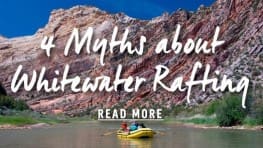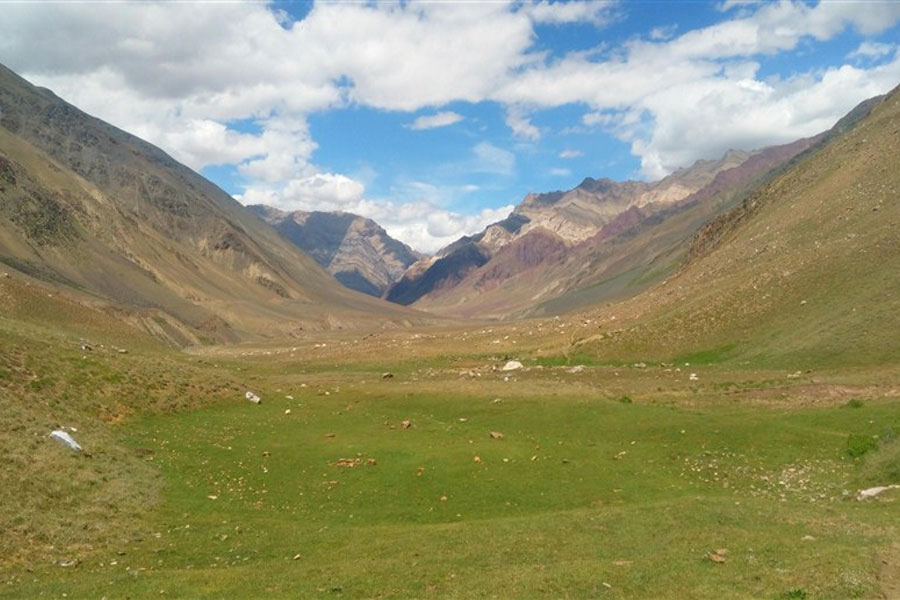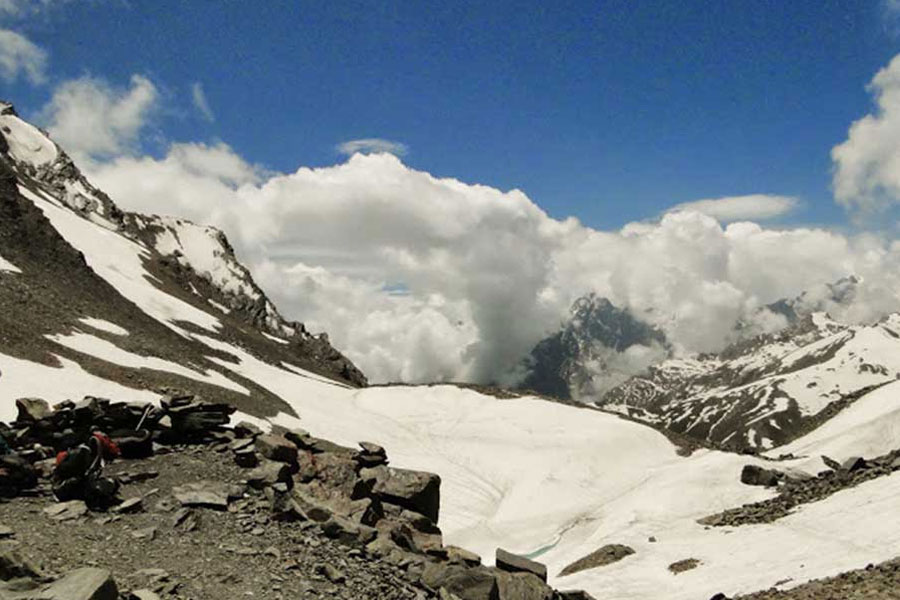Detailed Itinerary
Day 1 - Drive from Shimla to Kafnu
Your journey starts. Kafnu is a quaint village in the Bhaba valley of Kinnaur. Due to its elevation and accessibility to the Sutlej river, it is home to a wide variety of flora. You will be passing through Rampur and the journey boasts of grand views of the Kinnaur mountain range.
You will stay at Kafnu for the night, at one of the local lodges. It’s important to use the day to rest in preparation for the trek to Mulling tomorrow.
Day 2 - Kafnu to Mulling
The trek starts from Kafnu today. Brace yourself for a challenging day. It’s important to get a head start considering the trekking distance and the altitude gain, which at 2,759 feet is quite a challenge. From the village, walk for about 200 meters and you will spot India’s first underground dam, the ‘Bhaba Hydro Project‘.
Day 3 Mulling to Karah
After passing the meadow, continue to walk for another 1.2 km to reach the campsite near a water stream. You will find a lake within 200 meters from the campsite. The lake boasts of stunning reflections when it’s sunny. You can setup your campsite at Karah. You will have the entire afternoon to rest and recuperate for challenges that lie ahead.
Day 4 - Trek from Karah to Phustirang
Today is the shortest day of the entire trek since you have to cover only 4.91 km. Brace yourself for a steep ascent. The first order of the day is to cross the tributary of the Bhaba river. The mountain stream approaches from the left side of Phustirang. Cross the stream and continue to climb the steep slope. Tread with care since the terrain is a combination of stone and loose mud. The entire route today is dominated by mountain stream crossings and humps, which can be a bit taxing. It’s important that you pace yourself accordingly. About 4.2 km into the trek, you will arrive at a campsite which has been setup for lower Phustirang. From this spot, continue the upward climb for another 700 meters and you will reach Phustirang.
Day 5- Acclimatization and rest day at Phustirang
Day 6- Phustirang to Mangrungse via Pin Bhaba Pass
From the saddle point of the pass (highest point between the mountain valley), you will notice the sudden shift in landscape. The geographical contradictions are well pronounced in this spot. You will be leaving behind the lush grasslands of Bhaba valley and move to the brown, desert mountain valleys of Pin. The Pin river can also be seen from this point. The descent is steep and it is tricky, since it’s a combination of moraine, glacier and scree. Negotiate this terrain slowly.
About 2 km into the descent, you will spot the Pin river. Remove your footwear to cross the river to get onto the right side of the river. From here on, it’s a gradual descent yet riddled with moraine and scree. Pace yourself slowly and rest if you must. About 5 kms from the river-crossing, you will be able to see the Mangrungse campsite below the trail. From Mangrungse, the Tiya campsite is located across the river bank. Tiya is one of the campsites for the Pin Parvati Pass Trek.
Day 7 - Trek from Mangrungse to Mudh. Drive from Mudh to Kaza
Last day of the trek. Brace yourself for the long 16.29 km stretch to Mudh. Start as early as possible from your campsite. Climb the slope from Mangrungse to reach the trail and continue walking along the same. The distance between Mangrungse and Bara Boulder is 4 km and from the Bara Boulder campsite, it’s a gradual descent through a section filled with moraine. This campsite is a good spot but the water isn’t clean. It’s recommended that your water bottles are stocked up at Mangrungse.
The tributary of Pin river is just 300 meters from Bara Boulder. Cross this stream using the log bridge. The trail from Bara boulder is completely flat and is dominated by red soil and small red stones.
A flat walk for 1.5 km from Bara Boulder will take you to the banks of a mountain stream. Cross the stream using the log bridge to reach a dry, flat stretch of land. The Mudh village will be visible even from a distance of 5 km. It’s a picture worthy of a postcard and the beauty of this place is otherworldly.
Mudh Village – A slice of heaven
The sight of the village will motivate you to push yourself for this final stretch. The Pin river is the last river that you’ll need to cross to access the village. This is yet another exciting experience in this trek. The view of the suspension bridge dangling over the Pin river is a sight to behold.
Cross the river via the suspension bridge. After crossing the river, it’s a short climb to reach the village.
Day 8 - Drive from Kaza to Manali








